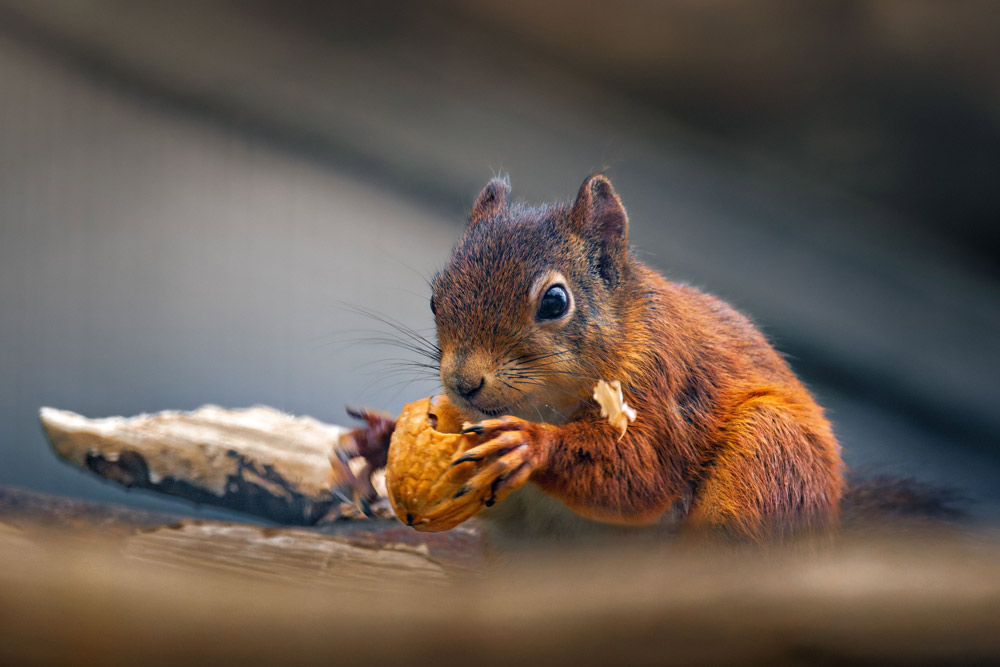Bibliographie de l’article : « L'animal et la pollution sonore : vivre avec le bruit »
Michel Delsaut : michel.univ@free.fr
Babisch, W., Beule, B., Schust, M., Kersten, N. & Ising, H., 2005. Traffic noise and risk of myocardial infarction. Epidemiology (Cambridge, Mass.), 16 : 33–40.
Bee, M. A., Buschermöhle, M. & Klump, G. M., 2007. Detecting modulated signals in modulated noise: (II) neural thresholds in the songbird forebrain. European Journal of Neuroscience, 26 : 1979–1994.
Bermúdez-Cuamatzin, E., Ríos-Chelén, A. A., Gil, D. & Garcia, C. M., 2011. Experimental evidence for real-time song frequency shift in response to urban noise in a passerine bird. Biology Letters, 7 : 36–38.
Boncoraglio, G. & Saino, N., 2007. Habitat structure and the evolution of bird song: a meta- analysis of the evidence for the acoustic adaptation hypothesis. Functional Ecology, 21 : 134–142.
Borgula , A., 1993. Causes of the decline in Hyla arborea. In: Stumpel A.H.P. and Tester U. (eds) Ecology and Conservation of the European Tree Frog. Proceedings of the 1st International Workshop on Hyla arborea. Institute for Forestry and Nature Research, Wageningen, pp. 71–80.
Brown, T., J. & Handford, P., 2003. Why birds sing at dawn: the role of consistent song transmission. Ibis, 145 : 120–129.
Brumm, H., 2004. Causes and consequences of song amplitude adjustment in a territorial bird: a case study in nightingales. Annals of the Brazilian Academy of Sciences, 76 : 289–295.
Brumm, H., Schmidt, R. & Schrader, L., 2009. Noise-dependent vocal plasticity in domestic fowl. Animal behaviour, 78 : 741–746.
Burmeister, S. S. & Wilczynski, W., 2005. Social signals regulate gonadotropin-releasing hormone neurons in the green treefrog. Brain, behavior and evolution, 65 : 26–32.
Campo, J., L., Gil, M., G. & Davila, S. G., 2005. Effects of specific noise and music stimuli on stress and fear levels of laying hens of several breeds. Applied Animal Behaviour Science, 91 : 75–84.
Clergeau, P., Savard, Mennechez, G. & Falardeau, G., 1998. Bird abundance and diversity along an urban–rural gradient: a comparative study between two cities on different continents. Condor, 100 : 413–425.
Clergeau, P., Croco, S., Jokimäki, J., Kaisanlahti-JokimAki, M.-J. & Dinetti, M., 2006. Avifauna homogenisation by urbanisation: Analysis at different European latitudes. Biological Conservation, 127 : 336–344.
Creel, S., Fox, J., E., Hardy, A., Sands, J., Garrott, R. & Peterson, R. O., 2002. Snowmobile activity and glucocorticoid stress responses in wolves and elk. Conservation Biology, 16 : 809–814.
Curry, C.M., Des Brisay, P.G., Rosa, P., Koper, N., 2018. Noise Source and Individual Physiology Mediate Effectiveness of Bird Songs Adjusted to Anthropogenic Noise. Scientific Reports. Mar 2;8(1):3942. doi: 10.1038/s41598-018-22253-5. PMID: 29500452; PMCID: PMC5834586.
Derryberry, E. P., 2009. Ecology shapes birdsong evolution: variation in morphology and habitat explains variation in white-crowned sparrow song. The American Naturalist, 174 : 24–33.
Derryberry, E. P., Phillips, J. N., Derryberry, G. E., Blum, M. J., Luther, D., 2020. Singing in a silent spring: Birds respond to a half-century soundscape reversion during the COVID-19 shutdown. Science. Oct 30;370(6516):575-579. doi: 10.1126/science.abd5777. Epub 2020 Sep 24. PMID: 32972991.
Delsaut, M., 1987. Comment chantent les oiseaux. La Recherche, 173 : 20-28.
Delsaut, M., 2007. Le chant des oiseaux. Le Héron, 40 (2) : 55-65.
Eberhardt, L., S., 1996. Energy expenditure during singing: a reply to gaunt et al. The Auk, 113 : 721–723.
Fahrig, L., Pedlar, J., H., Pope, S., E., Taylor, P., D. & Wegner, J. F., 1995. Effect of road traffic on amphibian density. Biological Conservation, 73 : 177–182.
Fernandez-Juricic, E., Poston, R., De Collibus, K., Morgan, T., Bastain, B., Martin, C., Jones, K. & Treminio, R., 2005. Microhabitat Selection and Singing Behavior Patterns of Male House Finches (Carpodacus mexicanus) in Urban Parks in a Heavily Urbanized Landscape in the Western U.S. Urban Habitat, 3 : 49–68.
Forman, R. T. T., Reineking, B. & Hersperger, A. M., 2002. Road traffic and nearby grassland bird patterns in a suburbanizing landscape. Environ Manage, 29 : 782–800.
Francis, C. D., Ortega, C. P. & Cruz, A., 2009. Noise pollution changes avian communities and species interactions. Current Biology, 19 : 1415–1419.
Fuller, R. A., Warren, P. H. & Gaston, K. J., 2007. Daytime noise predicts nocturnal singing in urban robins. Biology Letters, 3 : 368–370.
Gavett, A. P. & Wakeley, J. S., 1986. Blood constituents and their relation to diet in urban and rural House Sparrows. Condor, 88 : 279–284.
Grafe, T, U., 1999. A function of synchronous chorusing and a novel female preference shift in an anuran. Proceedings of The Royal Society London, Biological sciences, 266 : 2331–2336.
Habib, L., Bayne, E., M. & Broutin, S., 2007. Chronic industrial noise affects pairing success and age structure of Ovenbirds Seiurus aurocapilla. Journal of Applied Ecology, 44 : 176–184.
Halfwerk, W. & Slabbekoorn, H. 2009. A behavioural mechanism explaining noise-dependent frequency use in urban birdsong. Animal behaviour, 78 : 1301–1307.
Horak, P. & Lebreton, J.-D., 1998. Survival of adult Great Tits in relation to sex and habitat: a comparison of urban and rural populations. Ibis : 205–209.
Hu, Y. & Cardoso, G. C., 2010. Which birds adjust the frequency of vocalizations in urban noise? Animal behaviour, 79 : 863–867.
Katti, M. & Warren, P. S., 2004. Tits, noise and urban bioacoustics. Trends in Ecology & Evolution, 19 : 109–110.
Kaseloo, P. A., 2005. Synthesis of noise effects on wildlife populations. In Proceedings of the 2005 International Conference on Ecology and Transportation. Irwin, C. L., P. Garrett, and K. P. McDermott (eds.). Center for Transportation and the Environment, North Carolina State University, Raleigh, N. C., USA: pp. 33–35.
Krause, B., 2008. Anatomy of the soundscape : Evolving perspectives. Journal of the Audio Engineering Society, 56 : 73–80.
Kunc, H. P. & Schmidt, R., 2019. The effects of anthropogenic noise on animals: a meta-analysis. Biological Letters. 2019 Nov 29;15(11):20190649. doi: 10.1098/rsbl.2019.0649. Epub Nov 20. PMID: 31744413; PMCID: PMC6892517.
Lea, J., Dyson, M. & Halliday, T., 2001. Calling by male Midwife Toads stimulates females to maintain reproductive condition. Animal behaviour, 61 : 373–377.
Lengagne, T., 2008. Traffic noise affects communication behaviour in a breeding anuran, Hyla arborea. Biological Conservation, 141 : 2023–2031.
Lengagne, T., Aubin, T., Jouventin, P. & Lauga, J., 2000. Perceptual salience of individually distinctive features in the calls of adult king penguins. Journal of the Acoustical Society of America, 107 : 508–516.
Lengagne, T., Lauga, J. & Aubin, T., 2001. Intra-syllabic acoustic signatures used by the King Penguin in parent-chick recognition: an experimental approach. The Journal of experimental biology, 204 : 663–672.
Lercher, P., Evans, G. & Meis, M., 2003. Ambient noise and cognitive process among primary schoolchildren. Environment and Behavior, 35 : 725–735.
Lim, H., C. & Sodhi, N., S., 2004. Responses of avian guilds to urbanization in a tropical city. Landscape and Urban Planning, 66 : 199–205.
Lohr, B., Wright, T., F. & Dooling, R. J., 2003. Detection and discrimination of natural calls in masking noise by birds: estimating the active space of a signal. Animal behaviour, 65 : 763–777.
Luther, D. & Baptista, L., 2010. Urban noise and the cultural evolution of bird songs. Proceedings. Biological sciences / The Royal Society , 277 : 469–473.
Mendes, S., Colino-Rabanal, V., J. & Peris, S. J., 2011. Bird song variations along an urban gradient: The case of the European blackbird (Turdus merula). Landscape and Urban Planning, 99 : 51–57.
Mockford, E. J. & Marshall, R. C., 2009. Effects of urban noise on song and response behaviour in Great Tits. Proceedings. Biological sciences / The Royal Society, 276 : 2979–2985.
Moseley, D. L., Derryberry, G. E., Phillips, J. N., Danner, J. E., Danner, R. M., Luther, D. A. & Derryberry, E. P., 2018. Acoustic adaptation to city noise through vocal learning by a songbird. Proc Biol Sci. 2018 Oct 10;285(1888):20181356. doi: 10.1098/rspb.2018.1356. PMID: 30305435;
Murphy, C., G. & Floyd, S., B., 2005. The effect of call amplitude on male spacing in choruses of barking treefrogs, Hyla gratiosa. Animal behaviour, 69 : 419–426.
Murray Schafer, R., 1979. Le paysage sonore. Lattes, Paris. 389p.
Nemeth, E. & Brumm, H., 2009. Blackbirds sing higher-pitched songs in cities: adaptation to habitat acoustics or side-effect of urbanization? Animal behaviour, 78 : 637–641.
Nemeth, E., Pieretti, N., Zollinger, S. A., Geberzahn, N., Partecke, J., Miranda, A. C. & Brumm, H., 2013. Bird song and anthropogenic noise : vocal constraints may explain why birds sing higher-frequency songs in cities. Proceedings of The Royal Society Biological Sciences, 280(1754), 2012278.
Oberweger, K. & Goller, F., 2001. The metabolic cost of birdsong production. The Journal of Experimental Biology , 204 : 3379–3388.
Pellet, J., Guisan, A. & Perrin, N., 2004. A concentric analysis of the impact of urbanization on the threatened European Tree Fog (Hyla arborea) in an agricultural landscape. Conservation Biology, 18 : 1599–1606.
Reijnen, R., Foppen, R., Ter Braak, C. & Thissen, J., 1995. The effects of car traffic on breeding bird populations in woodland. III. Reduction in the density in relation to the proximity of main roads. Journal of Applied Ecology, 32 : 187–202.
Reijnen, R., Foppen, R. & Meeuwsen, H., 1996. The effects of car traffic on the density of breeding birds in Dutch Agricultural Grasslands. Biological Conservation, 75 : 255–260.
Richardson, C. & Lengagne, T., 2010. Multiple signals and male spacing affect female preference at cocktail parties in treefrogs. Proceedings. Biological sciences / The Royal Society, 277 : 1247–1252.
Ripmeester, E. & Slabbekoorn, H., 2007. Divergence in song and morphology between city and forest populations of the european blackbird. Proceedings XXI IBAC. International Bio-Acoustic Councl.
Seger, K. D., 2007. Avian bioacoustics in urbanizing landscapes: relationships between urban noise and avian singing behavior. Master’s thesis, Université de l’état de l’Ohio.
Seger-Fullam, K. D., Rodewald, A.D. & Soha, J. A., 2011. Urban noise predicts song frequency in Northern Cardinals and American Robins. Bioacoustics, 20(3) : 267-276
Senzaki, M., Yamaura, Y., Francis, C. D. & Nakamura, F., 2018. Traffic noise reduces foraging efficiency in wild owls. Sci Rep.X Aug 18 ; 6:30602. doi: 10.1038/srep30602. PMID: 27537709; PMCID: PMC4989872.
Slabbekoorn, H. & Den Boer-Visser, A., 2006. Cities change the songs of birds. Current Biology, 16 : 2326–2331.
Slabbekoorn, H. & Peet, M., 2003. Ecology: Birds sing at a higher pitch in urban noise. Nature : 424, 267.
Slabbekoorn, H. & Ripmeester, E. A. P., 2008. Birdsong and anthropogenic noise: implications and applications for conservation. Molecular Ecology, 17 : 72–83.
Slabbekoorn, H. & Smith, T. B., 2002. Habitat-dependent song divergence in the little greenbul: an analysis of environmental selection pressures on acoustic signals. Evolution, 56 : 1849–1858.
Slabbekoorn, H., Ellers, J. & Smith, T. B., 2002. Birdsong and sound transmission : the benefits of reverberations. The Condor, 104 : 564–573.
Stansfeld, S. A., Berglund, B., Clark, C., Lopez-Barrio, I., Fischer, P., Ohrström, E., Haines, M. M., Head, J., Hygge, S., Van Kamp, I. & Berry, B. F., 2005. Aircraft and road traffic noise and children’s cognition and health: a cross-national study. Lancet, 365 : 1942–1949.
Sun, J., W, C & Narins, P., M., 2005. Anthropogenic sounds differentially affect amphibian call rate. Biological Conservation, 121 : 419–427.
Troïanowski, M., Mondy, N., Dumet, A., Arcanjo, C. & Lengagne, T., 2017. Effects of traffic noise on tree frog stress levels, immunity, and color signaling. Conserv Biol. 2017 Oct;31(5):1132-1140. doi: 10.1111/cobi.12893. Epub 2017 May 11. PMID: 28074559.
Ward, S., Speakman, J., R. & Slater, P. J. B., 2003. The energy cost of song in the canary, Serinus canaria. Animal behaviour, 66 : 893–902.
Wollerman, L., 1999. Acoustic interference limits call detection in a Neotropical frog Hyla ebraccata. Animal behaviour, 57 : 529–536.
Wollerman, L. & Wiley, R. H., 2002. Background noise from a natural chorus alters female discrimination of male calls in a neotropical frog. Animal behaviou : 15–22.
Wood, W., E. & Yezerinac, S. M., 2006. Song Sparrow (Melospiza melodia) song varies with urban noise. The Auk, 123 : 650–659.











